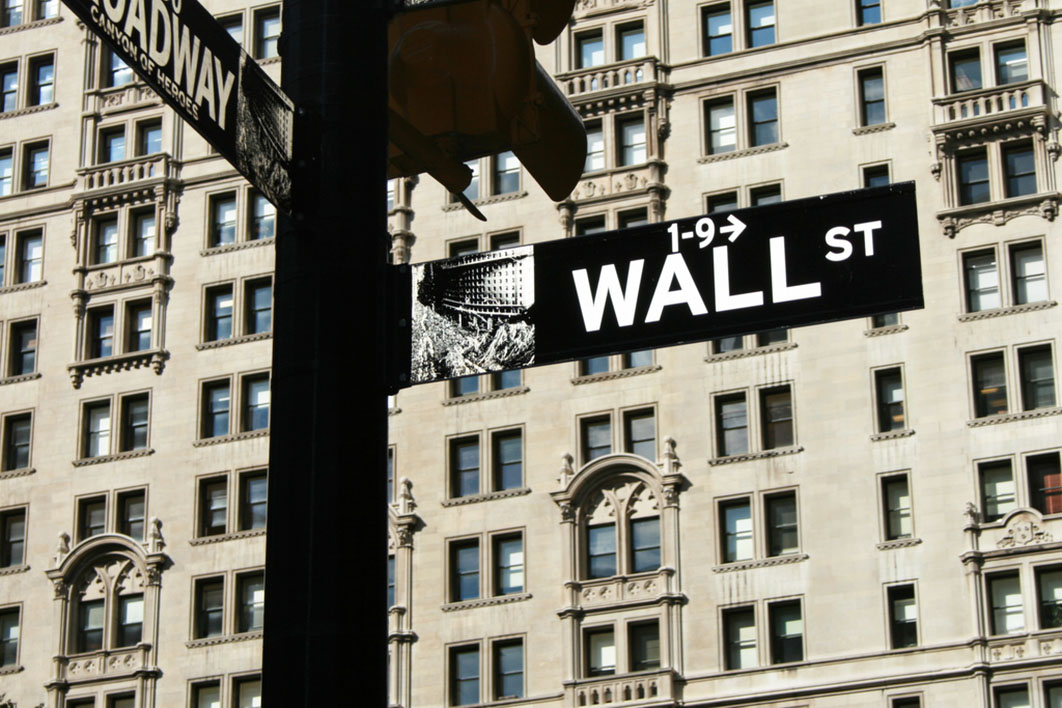John Moody, who began publishing investment ratings one hundred years ago, would have been surprised to learn that the company bearing his name has copped part of the blame – and from some commentators a lot of the blame – for the global financial crisis. Moody started out on Wall Street as a “stamp licker” in 1890, earning $20 a month. After working his way up through the ranks, he went out on his own, publishing industry guides and a monthly magazine for investors. But it was only after the downturn of 1907 that he came up with the idea of analysing the riskiness of the investment opportunities offered by individual companies – an activity that would eventually have so much influence not only over business but also over public policy.
As the dust settles on a dramatic eighteen months for the international economy, the credit rating agencies continue to attract criticism from the likeliest and unlikeliest of quarters. In his new book, The 86 Biggest Lies on Wall Street, the former investment banker John R. Talbott writes: “Of all the criminal behaviour conducted by all the criminal participants in the schemes and scams that created the global credit crisis, I believe the most egregious was that conducted for profit by the rating agencies.” Last month in the New York Times the economist Paul Krugman again criticised the agencies, “whose willingness to give a seal of approval to dubious securities played an important role in creating the mess we’re in.” Even the senior Republican on the House of Representatives subcommittee on capital markets, Scott Garrett, concedes that “they didn’t do a great job” and might need more supervision.
For people outside the finance industry, the growing reach and power of agencies that put a rating on bonds issued by borrowers can be puzzling. A century after Moody’s first set of appraisals, the industry is dominated by three companies – Moody’s, Standard & Poor’s and the French-owned Fitch Ratings – with a combined annual turnover of around $US6 billion. These three big players, along with a larger group of much smaller agencies, rate the risk associated with lending not only to companies but also to governments and public agencies, from Queensland to Botswana. Despite the emergence of rating agencies in individual countries and regions, the big three, and especially Moody’s and S&P, have cemented their dominance in recent years.
The turning point came in the 1970s. For the previous four decades the agencies had been a semi-formal part of the regulatory system in the United States, recognised in state legislation as arbiters of safe investments. They were private organisations, but in a country often suspicious of government regulation they took on some of the characteristics of public agencies. As Timothy Sinclair describes in his 2005 book, The New Masters of Capital, this role was reinforced in 1975 when the US Securities and Exchange Commission nominated Moody’s, S&P and Fitch to a new category – nationally recognised statistical rating agencies, or NRSROs – whose imprimatur guaranteed preferential treatment for the borrower’s bonds under federal regulations. At a stroke, the three agencies were not only locked in as key players in the regulatory system but were also protected from smaller competitors who hadn’t been given the nod by the SEC.
Meanwhile, the finance industry was developing increasingly complex financial instruments – derivatives and structured financings, for example – which gave the agencies a much more important role in helping investors decide between alternative options. Companies were less likely to seek funding from banks, and banks were facing stiffer competition for depositors’ funds. Not surprisingly, the banks themselves started seeking financial holdings that could increase their profits, and they sought them in a globalised financial world.
The impact of these factors on the size and profitability of the rating agencies could hardly have been greater. In the mid 1960s, according to one writer, S&P’s sole office, in New York, had “three full-time analysts, one old-timer who worked on a part-time basis, a statistical assistant, and a secretary.” Twenty years later the company employed 225 analysts and had branches in Tokyo and London. Another twenty years on, the two biggest agencies had between them around thirty offices, mainly in the United States but also on every continent except Africa. (In Australia, Moody’s set up in Sydney in 1988 and S&P in Melbourne in 1990; the Age’s Ruth Williams reports that they have about sixty and 130 employees respectively, with Fitch’s newer Australian operation employing twenty-three.)
The other important factor driving growth was a change in how the agencies charge for their services. Once, they earned money mainly by selling copies of detailed reports with the elaborately descriptive titles characteristic of the time. (John Moody’s first report was called Moody’s Analyses of Railroad Investments Containing in Detailed Form an Expert Comparative Analysis of Each of the Railroad Systems of the United States, with Careful Deductions Enabling the Banker and Investor to Ascertain the True Values of Securities by a Method Based on Scientific Principles.) But from the late 1960s, they increasingly charged the issuer of the bonds – the borrower – for assessing their capacity to pay back a loan.
This sounds a lot like a recipe for a conflict of interest, and it has certainly been the most common criticism made of the agencies over the past year. The borrower, who pays the rating agency, naturally wants to attract lenders. The agency is working for the borrower, so surely it has an incentive to talk down the possibility that the borrower mightn’t be able to repay? The agencies respond that they won’t last long in the business if they keep boosting the virtues of the companies paying them: a default will reflect very badly on whoever that gave a high score, so there’s a built-in bias towards caution. This argument has some force – or at least it did until the global financial crisis showed that the agencies could get things very wrong for rather a long time without being called to account.
There’s evidence, though, that the problem is not so much that the agencies are talking up their clients but that they are boosting a certain view of how business and the economy work, or should work. The agencies’ ratings reflect the mainstream of thinking among businesses, banking economists and the pundits who dominate the popular end of the business media. In this world, the long boom that began in the late 1980s, and was only briefly interrupted by the Asian economic meltdown and the dotcom crash, looked set to continue forever. This was a “weightless economy,” in which the marginal cost of producing the newest and most exciting products – delivered by the internet – was close to zero, so the old constraints on growth no longer applied. Fuelled by innovation, low interest rates and interesting new types of finance, western economies would keep expanding. Debt could always be repaid; housing bubbles would never burst. Above all, governments could leave wealth creation to the markets.
Even when the subprime market began to deteriorate, the agencies clung to their optimistic ratings. Only when the writing was clearly on the wall did they dramatically downgrade the funds, and by then it was far too late.
The flipside of the agencies’ enthusiasm for an unbridled private sector is a suspicion of the public sector – despite the fact that federal, state and local governments and public agencies, even in Australia, are among their clients. As economist John Quiggin observes: “State and local governments, which rarely default on their debt, are assessed far more stringently than corporate issuers… One effect of the differential ratings practices of the agencies is that government borrowers have been forced to seek insurance from bond insurance companies… that are, in reality, less sound than the governments they are insuring.”
Evidence that the agencies don’t like government spending was on display in Australia during the late 1980s and early 1990s. In a series of controversial decisions, agencies downgraded governments primarily on the basis that they were running high budget deficits or carrying what was considered too much debt. No one could honestly have believed that those governments were likely to default on their debts – which is what a credit downgrading is supposed to signal – so the agencies’ conscious or unconscious motivation must have been to pull these governments back into line with the prevailing business orthodoxy. The most dramatic rating decision involved the incoming Kennett government in Victoria in 1992. Conveniently for a government set on cutbacks, a two-notch downgrading came just before the new treasurer’s first budget, adding to a sense that the state finances were in crisis. Government spending on health, education and other programs was slashed, and Moody’s and S&P obliged by upgrading the state.
UNCHASTENED by their recent failures, the agencies are still pressuring governments to toe the line. In May, the Wall Street Journal reported, S&P threatened the British government with the loss of its coveted triple-A credit rating. “The warning – marking the first time the UK’s top rating has come under threat since S&P began assessing it in 1978 – is another blow for Prime Minister Gordon Brown ahead of elections to take place by June 2010.”
It is the agencies’ worldview that makes changing the system so difficult. They are quite happy to concede the need for more “transparency” and a degree of greater competition, but it’s hard to imagine any major shift in the weight of opinion they express. The British government has been a leading exponent of the need for governments to stimulate the ailing world economy – a strategy that has won fairly wide, though not universal, support – but the agencies still believe that their own view of government debt is the right one. The agencies have been under intense scrutiny before – many mainstream economists now accept that they contributed to the depth and duration of the Asian economic crisis, for instance – and have largely escaped change. The intense criticism during the Enron scandal did force the US Securities and Exchange Commission to open up the system a little by giving more agencies NRSRO status, but not surprisingly the big three, with their long head start, continued to dominate.
Over the past year more significant options for reform have been discussed in Europe, North America and Australia. Europe has taken the running, adopting the tightest set of regulations. Agencies operating in European Union countries must now register with the Committee of European Securities Regulators, and must disclose their methods and make clear when they are rating “complex products” like those that precipitated the subprime crisis. Agencies will also be required to publish annual transparency reports and – importantly – to have at least two directors on their boards whose salary does not depend on the agency’s business performance. Agencies must also institute an ongoing internal review of the quality of their ratings and no longer provide financial advisory services alongside their ratings function.
All that seems pretty clear, though whether it will shift the industry-wide worldview is another question. What’s nowhere near as clear is what the United States will do, and what that means for the European regulations. “After proposing some radical and promising reforms of the regulation of the ratings industry, the Securities and Exchange Commission settled in December on the two least consequential and least controversial proposals,” says Richard Herring, Professor of Finance in the Wharton Financial Institutions Center at the University of Pennsylvania. These two new rules separate consulting from rating and prohibit rating agencies from accepting gifts worth $25 or more from their clients.
President Obama’s proposals were not much tougher, according to Eric Dash, banking writer with the New York Times. “While the administration is proposing some modest changes, none addresses what many see as the central problem: Services like Moody’s and Standard & Poor’s are paid by the companies whose securities they are evaluating. It is as if Hollywood studios paid movie critics to review their would-be blockbusters,” he wrote last month. “Many of the proposals… are vague principles or paper standards that go little beyond changes being contemplated by the Securities and Exchange Commission, or even the rating agencies themselves.”
The White House proposals did include a call for regulators to stop relying so heavily on assessments by the agencies, and Congress – via a number of committees – is looking at a further move away from this quasi-regulatory role, together with other proposals for change. But the legislative process could be protracted and there’s a strong chance that the options will be diluted. Australia, meanwhile, will now insist that agencies obtain a financial services licence, bringing them under regulatory scrutiny, and conform to a code of conduct developed by the International Organization of Securities Commissions, or IOSCO, which is less stringent than the new European rules.
According to Timothy Sinclair, there’s no reason to think that rating agencies will be less important in future. Complex financial arrangements will inevitably be more widespread, and the agencies’ business model is unlikely to change, which means that issuers of bonds will still overwhelmingly foot the bill.
“If there is a substantive change to come out of the crisis,” he told me by email, “it may come in forcing the agencies to play the game they were initially founded to play: judge. The problem was that in working on securitised finance the agencies stopped playing this role and started helping financial players create financial instruments.”
The IOSCO code of conduct certainly stresses the need for agencies to be rigorous and independent in their judgements. As Sinclair puts it, “agencies must play a much more conservative game – like all market actors really. This might lead to the development of new institutions as securitised finance is a creature of ratings. It only exists because of the different categories of risk. So there may be an opportunity here for a lot of ex–rating agency officials to establish advisory firms.”
If the regulations eventually adopted by the United States are significantly out of step with Europe, then the chance of breaking the stranglehold of the US-based agencies could be lost. Europe might bolster some of its own agencies, and the big three will have to adhere to the European rules when they’re working out of their European offices, but it’s likely that the rest of the world will be directly or indirectly subject to the American regulations, and hence to the influence of the two giant American agencies.
This means that people like Bill English, New Zealand’s finance minister, will probably continue to frame national budgets – as he did just six weeks ago – with one eye on the rating agencies. As the NZ media reported at the time, government ministers met with S&P analysts in the week before the budget, apparently as part of a successful campaign to head off a downgrade. The agencies would no doubt argue that their intervention – or threatened intervention – helped the government make difficult but necessary decisions about public spending. Some New Zealanders might wonder to whom their elected government feels accountable.
Not everyone is in the thrall of the agencies, though. In February this year, a few days before she planned to announce the state election, the Queensland premier Anna Bligh received the news that S&P had downgraded Queensland’s credit rating. Five months and one election later, Bligh is still premier. This suggests that governments might not always be taking the riskier course when they ignore or stand up to the agencies – something that governments all over the world might consider when they next hear rumblings from the big three.
For his part, John Moody lived to see his company prosper through almost half a century. He died in 1958, aged eighty-nine, having become a “strong advocate of Christian principles in business.” •




